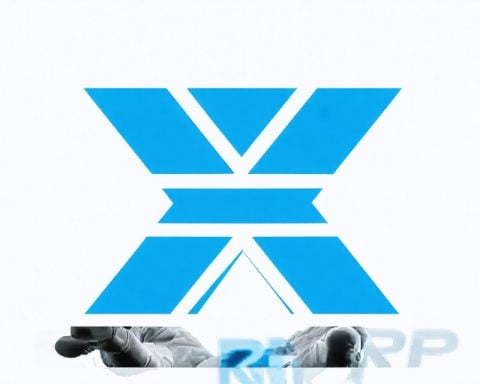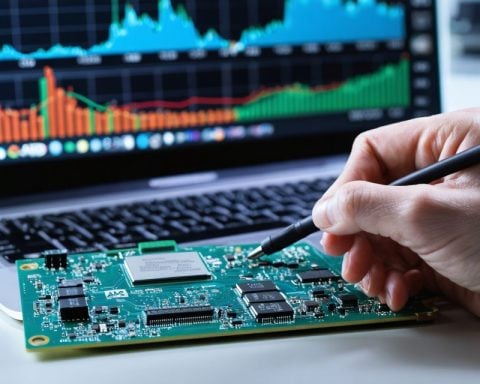- The history of button technology highlights the dual nature of progress, revealing both its allure and underlying tensions.
- Buttons evoke nostalgia for their tactile certainty, contrasting with today’s abstract touchscreen interactions, which often lack feedback.
- The growing reliance on touchscreens raises challenges, such as decreased accuracy and increased errors in mobile device use.
- In gaming, physical buttons remain essential, offering precision and reliability that touch interfaces struggle to match.
- The enduring presence of buttons suggests that technological innovation should balance new interfaces with tactile assurance.
- As technology evolves, blending physical connections with novel interfaces fosters a future where simplicity and sophistication coexist.
A simple press can unleash an orchestra of modern convenience. Yet, as the delicate dance of our fingers on touchscreens reshapes daily life, the enduring allure of the physical button invites a second glance.
The journey of button technology, a tale eloquently chronicled in Rachel Plotnick’s eye-opening exploration, reveals the duality of progress. She delves into the rich past of buttons, showcasing how they first sparked both pleasure and panic. As industrial marvels once promised to solve society’s woes, skeptics feared they would obscure vital labor behind sleek facades, widening social chasms.
Fast forward to today’s touchscreen age, where swipes and taps have usurped once-familiar buttons. Where once a well-crafted push guaranteed a response, modern interactions often lack tactile certainty. This abstraction can baffle the simplest interactions—anticipation met with no feedback.
In the realm of mobile devices, where text becomes blurred and errors frequent, the tension between touch and trust grows. Driving, once a mechanical symphony of dials and switches, transforms into a test of precision and focus, blurring safety’s line.
Yet, amidst this technological evolution, there’s one domain where resilience against the touchscreen’s allure remains undeniable: video games. Here, buttons reign supreme. Gamers, warriors of virtual realms, demand precision and reliability, attributes physical buttons deliver effortlessly. The enduring presence of controllers in gaming not only honors tradition but affirms their unmatched advantage in an era defined by fleeting touchpoints.
What can this resilient segment teach us? In our pursuit of innovation, the key takeaway emerges: the need for balance between novel interfaces and tactile assurance. Embracing the future doesn’t require abandoning the physical connections that served us well. The humble button, steadfast through the sands of tech revolutions, quietly reminds us of the value in blending innovation with tactile certainty.
As we look toward a horizon where technology grows ever more intangible, perhaps the lesson is to find harmony—a future where tangible meets touch, and simplicity meets sophistication.
Why Buttons Still Matter in a Touchscreen World: Uncovering Technological Balance
Introduction: A Return to Tactile Feedback
The evolution from mechanical buttons to touchscreens marks significant progress in technology, redefining daily interactions. Yet, the physical button maintains its relevance, providing a crucial balance between tactile feedback and digital innovation. This article delves deeper into the significance of physical buttons in modern technology, exploring their enduring presence, advantages, and areas where they continue to outperform touch interfaces.
The Timeless Appeal of Physical Buttons
The Evolution of Button Technology
Buttons have been a part of everyday life for over a century, evolving from simple mechanical switches to sophisticated, programmable keys. Their history, eloquently explored by Rachel Plotnick, encapsulates both industrial triumphs and societal skepticism, highlighting the button’s complex relationship with technology and innovation.
Where Buttons Outshine Touchscreens
Despite the widespread adoption of touchscreens, buttons offer several distinct advantages:
– Tactile Feedback: Physical buttons provide immediate, tangible responses, crucial for users needing confirmation that an action has been executed, such as gamers and professionals in high-precision jobs.
– Reliability: Buttons often work without the need for a power source, making them reliable in situations where touchscreens might fail.
– Intuitive use: Many users still find buttons more intuitive, especially when performing repetitive tasks that require muscle memory.
Real-World Use Cases and Industry Trends
Gaming: The Stronghold of Buttons
In the gaming industry, physical buttons remain indispensable. Controllers and console systems extensively utilize buttons for their unparalleled precision and rapid response times, which are essential in fast-paced gaming environments.
Automotive Industry: Safety and Control
While touchscreens in vehicles provide aesthetic and interface flexibility, buttons are vital for critical functions where tactile and visual clarity ensure driver safety. An increasing number of manufacturers are exploring hybrid models that blend both interfaces to optimize driver experience without compromising safety.
Home Appliances: Balancing Tradition and Technology
Home appliances such as microwaves and washing machines continue to integrate buttons, often due to their simplicity and reliability. Innovations in this sector consider user comfort by offering both digital displays and manual controls.
Controversies and Limitations
The Learning Curve
While younger generations adapt quickly to touchscreens, some users, particularly older individuals, find physical buttons easier to use due to established muscle memory and familiarity.
Limitations in Wearable Tech
Wearables and smaller devices often exclude physical buttons to conserve space and enhance sleek designs, posing a challenge for users accustomed to tactile feedback.
Insights & Predictions: The Future of User Interfaces
As we progress into an era of voice recognition and gesture-based interfaces, a dual approach combining physical buttons with emerging touch technology could redefine user interactions. Companies might find success in hybrid designs that incorporate the sensory satisfaction of button presses with the versatility of touchscreen interfaces.
Actionable Recommendations: Achieving Technological Harmony
1. Embrace Hybrid Models: Encourage innovation that combines buttons and touchscreens to cater to diverse user preferences.
2. Focus on User Experience: Prioritize designs that enhance usability and accessibility, ensuring inclusivity for all age groups.
3. Upgrade Without Sacrificing Simplicity: Maintain user-friendly features by offering both digital and tactile options in new product designs.
Conclusion
In a rapidly advancing technological landscape, physical buttons offer clarity, precision, and reliability that touchscreens sometimes lack. The balance between digital innovation and tangible interfaces is not only possible but necessary for a future that harmonizes complexity with simplicity. As we navigate this evolving frontier, the steadfast presence of the button reminds us of the power of tactile certainty. For more insights into technological trends and balances, visit TechCrunch and WIRED.

















